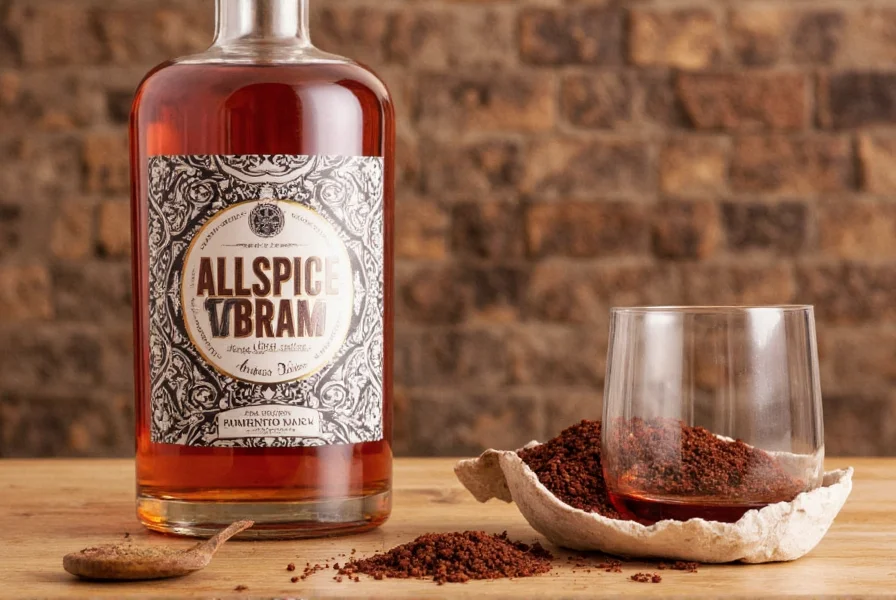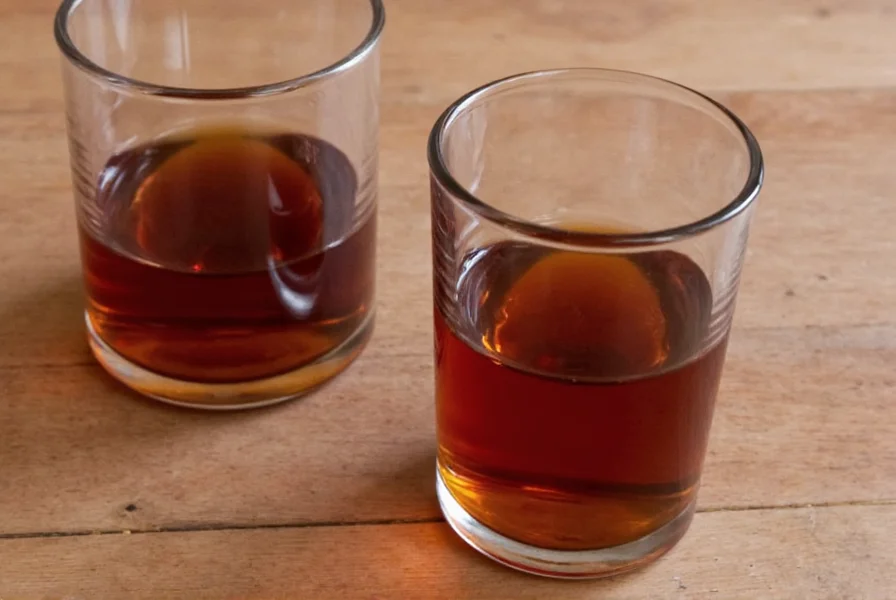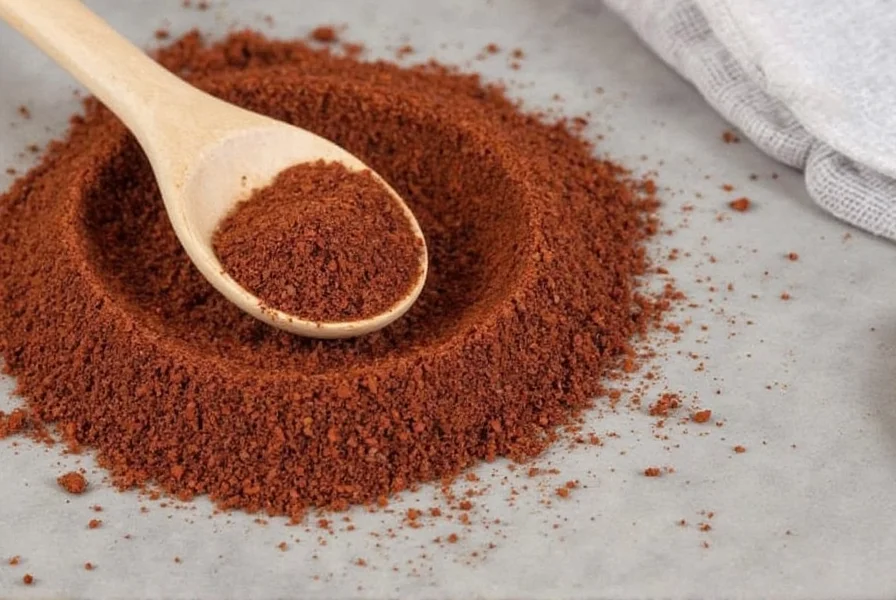Allspice pimento dram represents a fascinating intersection of culinary tradition and mixology. Despite the confusing terminology, it's crucial to understand that allspice refers to the dried berry of the Pimenta dioica tree (native to Jamaica), while pimento dram is the spiced rum liqueur made from these berries. This distinction matters significantly when following recipes or selecting ingredients for cooking and cocktail creation.
Understanding Allspice: The "Pimento" Berry
The allspice berry, often called "pimento" in Caribbean contexts, earned its English name because its flavor profile resembles a blend of cinnamon, nutmeg, and clove. Botanically classified as Pimenta dioica, these small berries come from an evergreen tree native to the Greater Antilles, particularly Jamaica, which remains the world's premier producer of high-quality allspice.
When dried, these berries become the familiar brown "peppercorn-like" spice we know as allspice. The term "pimento" (not to be confused with Spanish pimientos or bell peppers) comes from the Spanish adaptation of the Taino word for the spice. This linguistic distinction explains much of the confusion surrounding allspice liqueur cocktail recipes and ingredient specifications.
Pimento Dram: History and Production
Pimento dram emerged from Jamaican plantation traditions where workers would preserve allspice berries in rum, creating both a medicinal tonic and flavorful spirit. Traditional production involves steeping whole allspice berries in high-proof Jamaican rum, often with additional ingredients like sugar, citrus peel, and sometimes other warming spices.
The "dram" in the name refers to the Scottish term for a small serving of spirit, reflecting historical British colonial influence. Authentic pimento dram has a complex flavor profile featuring:
| Flavor Note | Intensity | Contribution to Cocktails |
|---|---|---|
| Warm baking spices | High | Creates autumnal, comforting profiles |
| Citrus undertones | Medium | Balances sweetness, adds complexity |
| Rum base character | Variable | Provides alcoholic backbone and depth |
| Subtle floral notes | Low | Enhances aromatic complexity |
Key Differences: Allspice vs. Pimento Dram
Many home cooks and bartenders confuse ground allspice with pimento dram, leading to recipe failures. Understanding these differences is essential for successful implementation in both culinary and mixological applications:
- Allspice (ground or whole berries): A dry spice with concentrated flavor, used in small quantities for baking, marinades, and spice blends
- Pimento dram: A liquid liqueur containing alcohol, sugar, and extracted flavors from allspice berries, used as a cocktail ingredient or flavoring agent
When a recipe calls for "pimento dram," substituting ground allspice will create an unpleasantly gritty, overly concentrated result. Conversely, using pimento dram where ground allspice is specified will introduce unwanted liquid and alcohol content.
Culinary and Mixological Applications
Pimento dram shines in both traditional and contemporary applications. For cocktail enthusiasts exploring best cocktails with allspice liqueur, consider these usage guidelines:
Cocktail Applications
As a key component in classic Jamaican cocktails, pimento dram adds complexity without overwhelming other ingredients. Bartenders typically use it in one of three ways:
- Primary spirit: In traditional Jamaican drinks like the Pimento Cocktail
- Supporting flavor: As a modifier in tiki cocktails (typically ¼-½ oz)
- Rinsed glass: For aromatic enhancement without strong flavor impact
When working with pimento dram in cocktails, remember that its sweet, spiced profile complements citrus, dark rum, and tropical fruit flavors exceptionally well. The pimento dram flavor profile makes it particularly valuable in autumn and winter cocktails.
Culinary Applications
Beyond cocktails, pimento dram enhances certain culinary creations:
- Adds depth to fruit compotes and poaching liquids
- Enriches chocolate desserts with warm spice notes
- Creates complex glazes for roasted meats
- Enhances bread pudding and other spiced desserts
Chefs should note that the alcohol content will cook off, leaving only the complex spice flavors. This makes it particularly valuable when seeking the flavor of allspice without its sometimes harsh, gritty texture.

Substitutions and Pairings
When you're wondering how to substitute pimento dram, consider these options based on your specific need:
- For cocktails: Combine ¾ oz dark rum + ¼ oz allspice syrup + 2 dashes Angostura bitters
- For baking: Use allspice simple syrup (equal parts water, sugar, and crushed allspice berries, simmered 10 minutes)
- For non-alcoholic applications: Allspice tea or infused simple syrup
These substitutions won't perfectly replicate authentic pimento dram but can provide similar flavor profiles when the genuine article isn't available. For those searching where to buy pimento dram, check specialty liquor stores, Caribbean markets, or online retailers that ship to your area.
Traditional Cocktails Featuring Pimento Dram
Authentic Jamaican cocktails showcase pimento dram's unique character. These recipes demonstrate proper usage techniques for allspice liqueur cocktail recipes:
Jamaican Pimento Cocktail
- 2 oz aged rum
- ½ oz pimento dram
- ¼ oz fresh lime juice
- 2 dashes Angostura bitters
Stir with ice and strain into a chilled coupe. Express orange twist over the drink.
Tiki Mai Tai Variation
- 1½ oz Jamaican rum
- ½ oz aged rum
- ¼ oz pimento dram
- ¾ oz lime juice
- ½ oz orgeat
- ¼ oz orange curaçao
Shake with ice and strain over crushed ice. Garnish with mint sprig and lime wheel.

Storage and Shelf Life
Proper storage maintains pimento dram's quality and extends its usability. Unlike many liqueurs, pimento dram contains natural spices that can settle over time. Follow these guidelines:
- Store in a cool, dark place away from direct sunlight
- Keep bottle tightly sealed when not in use
- Shake gently before each use to redistribute settled spices
- Consume within 1-2 years for optimal flavor (though it remains safe indefinitely)
Homemade versions may have shorter shelf lives depending on sugar content and preservation methods. Commercial products typically contain sufficient alcohol and sugar to prevent spoilage for extended periods.
Creating Authentic Flavor Profiles
Understanding allspice dram vs allspice liqueur terminology helps avoid recipe confusion. While "pimento dram" specifically refers to the traditional Jamaican preparation, "allspice liqueur" is a broader category that may include variations from other regions.
For authentic Caribbean flavor profiles, seek products labeled specifically as "pimento dram" rather than generic "allspice liqueur." Traditional Jamaican producers follow time-honored methods that create a more complex, balanced product compared to mass-produced alternatives.
Frequently Asked Questions
What is the difference between allspice and pimento dram?
Allspice refers to the dried berry of the Pimenta dioica tree, used as a ground spice in cooking. Pimento dram is a liqueur made by steeping allspice berries in rum with sugar and sometimes additional flavorings. They are fundamentally different products - one is a dry spice, the other is a liquid spirit.
Can I make my own pimento dram at home?
Yes, you can create homemade pimento dram by combining 1 cup of high-quality dark rum, ¼ cup of sugar, and 2 tablespoons of whole allspice berries in a sealed jar. Shake daily for 2-3 weeks, then strain. For authentic traditional Jamaican pimento dram, some recipes include orange peel and a cinnamon stick for additional complexity.
What cocktails traditionally use pimento dram?
Pimento dram features prominently in classic Jamaican cocktails like the Pimento Cocktail and certain Tiki variations. It's essential in the Jamaican version of the Mai Tai and appears in historical recipes like the Three Dots and a Dash. Modern craft cocktail bars use it in autumnal drinks as a sophisticated alternative to simple allspice syrup.
Is pimento dram the same as allspice liqueur?
While often used interchangeably, there are subtle differences. "Pimento dram" specifically refers to the traditional Jamaican preparation method, while "allspice liqueur" is a broader category. Authentic pimento dram typically has a more complex flavor profile with rum as the base, whereas some allspice liqueurs might use neutral spirits and additional sweeteners.
Can I use ground allspice instead of pimento dram in recipes?
No, substituting ground allspice for pimento dram will not work well. Ground allspice is a dry spice with concentrated flavor, while pimento dram is a liquid liqueur. Using ground allspice in place of pimento dram creates texture issues and uneven flavor distribution. For how to substitute pimento dram properly, combine rum, allspice syrup, and bitters to approximate the flavor profile.











 浙公网安备
33010002000092号
浙公网安备
33010002000092号 浙B2-20120091-4
浙B2-20120091-4